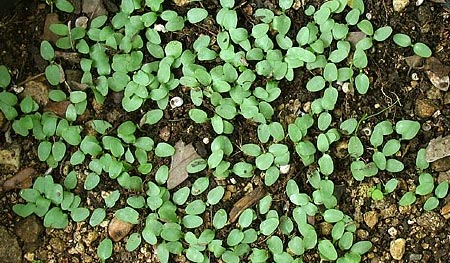
Chaptalia texana Seedlings, 26 May 2010 — Achenes from April


Context: The sole pollen source for sexual reproduction is from the small set of central florets.
In the life cycle of sexual organisms, a specialized cell division — meiosis — reduces the number of chromosomes from two sets (2n, diploid) to one set (n, haploid), while fertilization restores the original chromosome number.
adapted from Isabelle d'Erfurth et al
One key element of apomixis is apomeiosis, a deregulation of meiosis that results in a mitotic–like division. ... The replacement of meiosis by mitosis (which maintains the same number of chromosomes [2n, diploid]) is a key component of apomixis, or clonal reproduction through seeds....
adapted from Isabelle d'Erfurth et al
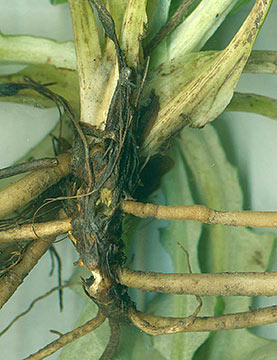
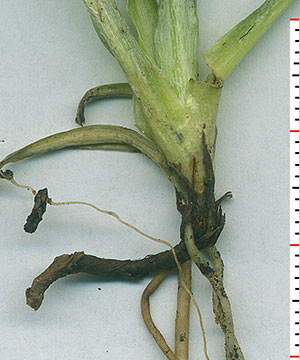
Although rhizomes are reported for C. texana in the taxonomic literature, my interpretation of these formations is that they represent older stages of the stem which have become covered with debris and soil, and subsequently root at the internodes and may even branch at the base. When a new basal branch also develops roots, this formation has the potential for vegetative clonal reproduction.
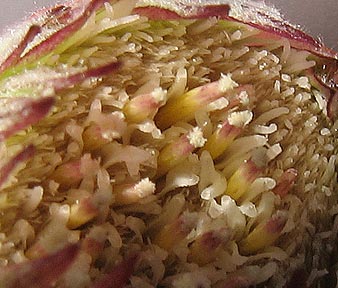
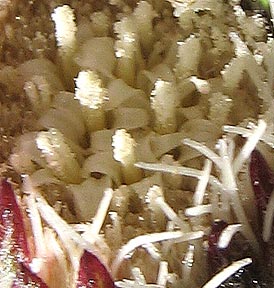
Although I did not observe any pollinators during this period, I did not determine whether the pollen on a given head was from another plant. Self–pollination must be considered as a possibility.
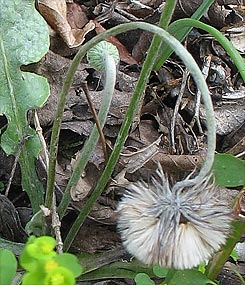
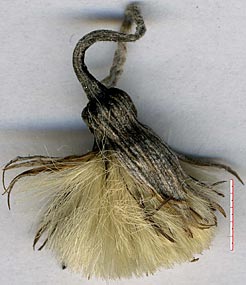
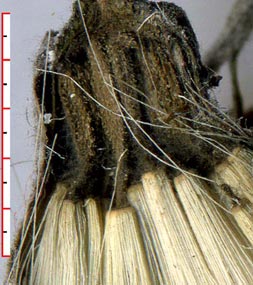
C. texana achenes collected in mid April were collected and planted in a container. The rate of germination was quite high. (Photo at top of this page)

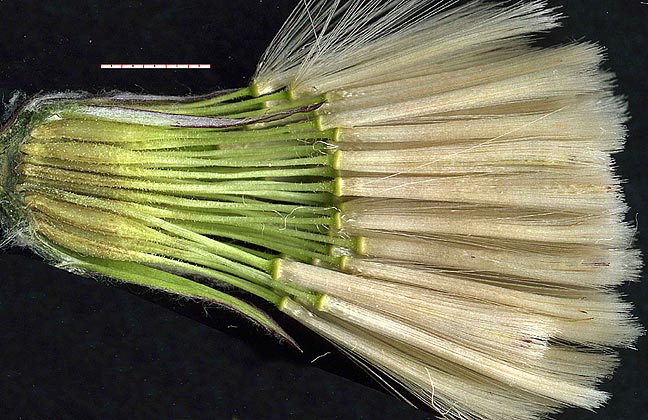
C. carduacea head (reduced ligule type) with well-developed achenes, April 8. [click to enlarge]
C. carduacea blooms somewhat later, and perhaps also because of its closed heads, did not seem impacted by weather conditions in 2010. Aborted heads were not noted and well developed achenes at dispersal were the rule. However, inspection of C. carduacea achenes (April 8) image above shows that not all achenes were equally well developed. Those in the center that are less well developed, enlarged below with red lines, belong to perfect central florets (visible within the surrounding pappus wall). Cleistogamy can thus be ruled out, since it would benefit only the central perfect florets.
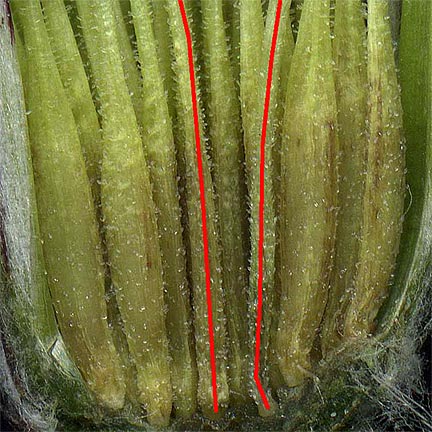
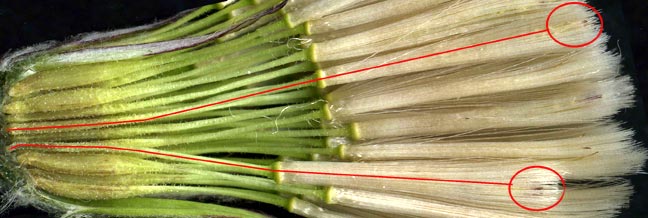
Although the central florets do develop apparently well–formed achenes, a relatively large number of them do not. A set of 24 central–floret achenes collected at dispersal gave the following results: 8 (below left) were clearly well developed; 7 (marked with green 'x') were smaller, but possibly ok; 9 (red 'x') did not seem to have developed.
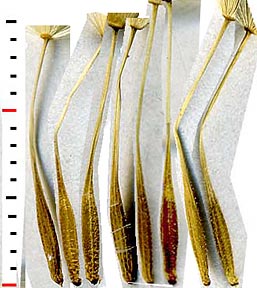
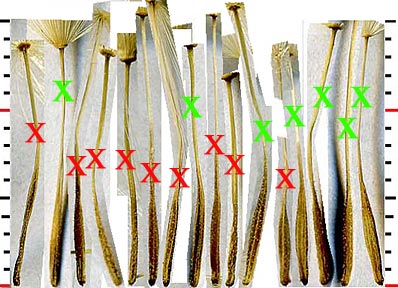
This was not typical for the eligulate pistillate florets, only a few of which had aborted.
I conclude that in spring 2010 during the early spring phase pollen from the central florets was essential for fertilization for both species. Self–pollination cannot be ruled out. No support for cleistogamy or apomixis was found.